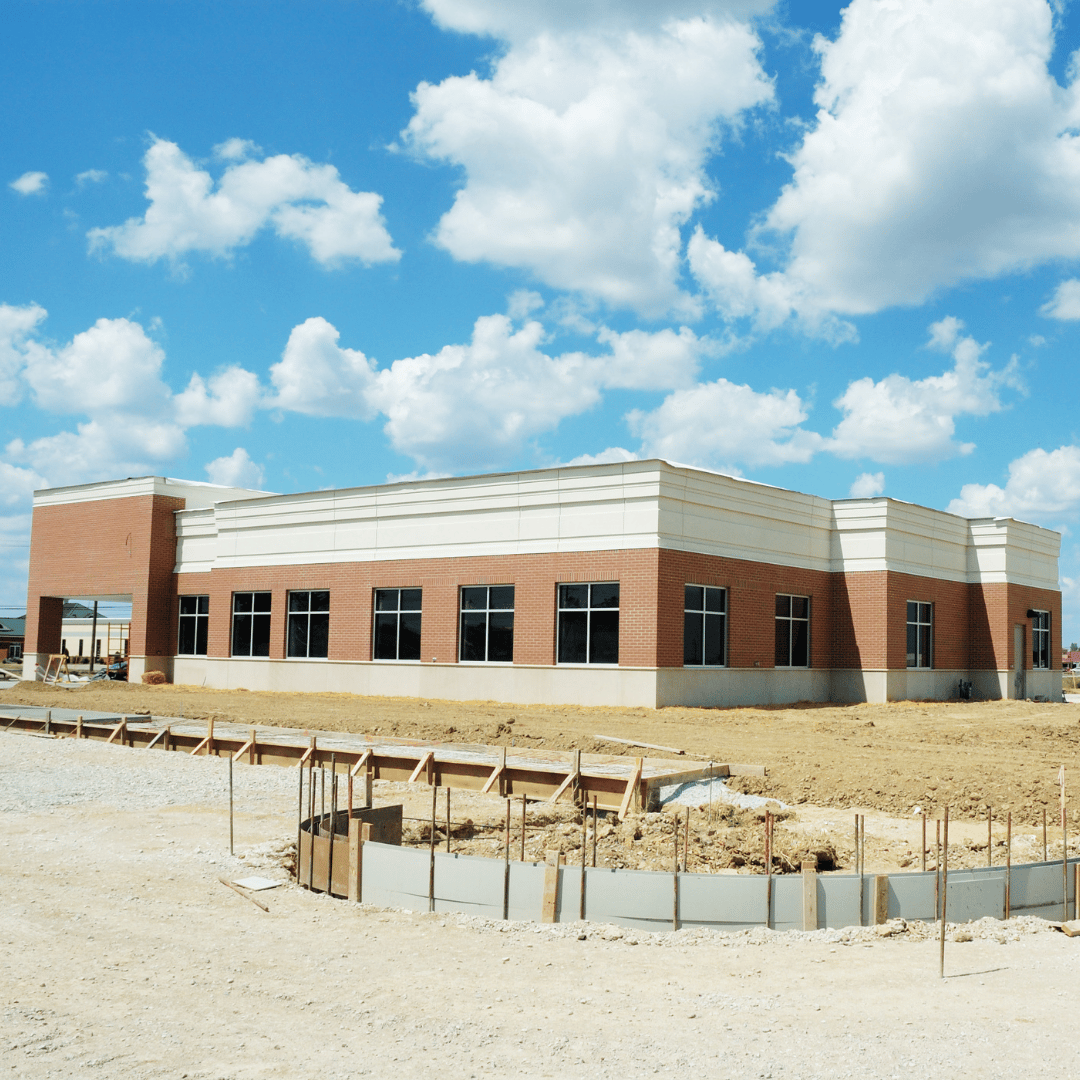What is commercial construction? Commercial construction is all around us. Whether you know it or not, the structures you inhabit when you go grocery shopping, catch a flight or even cheer on your favorite professional sports team all fall under the umbrella of commercial construction. The following article describes the difference between commercial and residential construction, lists the most common examples of commercial construction, and details exactly how these structures are built.
Commercial construction is simply the designing and building or renovating, of a commercial structure. It differs from residential construction in the general scope of the projects and the types of structures that are built; residential construction is about building structures for people to live in, while commercial construction includes structures used for retail, restaurants, office buildings, medical facilities, institutional buildings, lodging facilities, sports facilities, and industrial structures.
Table of Contents
What is commercial construction and how is it different from residential construction?
Commercial construction is a single term that refers to a wide spectrum of construction projects. Most of the infrastructure we use in modern society would fall under the umbrella of “commercial construction,” but what it all essentially boils down to is the designing and building (or renovating/remodeling) of commercial structures. A “commercial structure” simply refers to a structure owned by a business or corporation. The construction of commercial structures can be funded by developers or local and national governments.
Commercial construction differs from residential construction in a number of different ways. The most obvious way is that residential construction includes structures that are designed for residential living. These types of buildings include houses, condos, townhomes, etc., and are funded by homeowners and developers. Apart from this, the scope of the projects and the equipment required also differ. Commercial construction is typically a much larger endeavor overall, requiring a bigger crew, job site, and lots of complicated heavy machinery, such as bulldozers, cranes, and excavators. These projects may use much heavier materials for framing and support, such as steel, rather than just wood. Of course, a commercial construction project can be relatively small in scale as well, such as when remodeling an office, but it can also be as massive as a construction project can possibly get. Just imagine the difference between building a small home and building the Empire State Building in New York City!
Examples of commercial construction
While the term “commercial construction” covers a lot of ground, everything that falls under this umbrella requires its own specific set of standards that need to be met for practical purposes and safety regulations. Here are just some of the most common examples of commercial construction:
Office Buildings:
We all have a common image that we picture in our minds when we think of office space, but the truth is, offices come in all different shapes and sizes. Some offices may be connected to another building where other aspects of the business are run, some may have cafeterias or gyms (or both!), and they can range from being the size of a house to a skyscraper! Whatever form it may take, an office building typically needs to be able to store and protect a large amount of technology, such as computers and networking lines.
Industrial Buildings:
Industrial buildings include structures such as warehouses, manufacturing plants, refineries, and more. In addition to being able to reliably protect technology, these structures may contain vast amounts of advanced, and even dangerous, heavy machinery.
Medical Facilities:
Medical facilities such as hospitals can be large, complicated buildings (oftentimes multiple buildings) with a variety of very particularly designed rooms and spaces that serve very different and important functions, also housing incredibly expensive, state-of-the-art medical equipment. These facilities need to be capable of being efficiently maintained and kept in pristine condition, as well as have reliable power for the technology used every day to perform life-saving surgeries. The differences in the functions of the different spaces in a hospital cannot be stressed enough—in one area of the building somebody may be eating McDonald’s, while in another someone is undergoing heart surgery! With such an intense level of variation, specificity, and complexity, the construction of medical facilities requires major expertise.
Lodging Facilities:
Structures like hotels are meant for a revolving door of people to temporarily live in, and therefore require all the amenities of a modern home on a massive scale. These, of course, include reliable hot water for showers and sinks, internet access, television, kitchen/dining areas, gyms, etc. With thousands of guests flowing through every year, these facilities need to be built to last.
The process of commercial construction
Now that you may have a better vision for your commercial construction project, it is time to break down the process of how these structures are actually built.
The first step is planning and development. This entails things like establishing a budget, verifying location and zoning, conducting the appropriate environmental tests, and verifying that all sewer lines and fire hydrants are suitable for the building.
The next step, pre-design, is when the architect and general contractor are put in contact with one another, and the project goals and accurate total cost are established. Basically, it is the time for ironing out what the specific requirements for the construction are. In the design phase, the actual plans for the construction are mapped out. This includes creating site plans and floor plans, as well as plans for necessary systems, such as plumbing, heating, HVAC, electricity, and mechanical systems, to name a few. The following step is pre-construction, in which all of the appropriate permits and forms of insurance are obtained. This is also when the full construction team that will work on the project is put together.
Next is the actual construction phase, where everything comes together and the structure is brought to life. In the post-construction phase, the contractor and client do a detailed tour of the construction and note any unsatisfactory elements that need to be fixed. Once any problems are fixed and the final inspection is complete, the building is ready to be put to use!
The perfect building for your business
From office buildings to airports, commercial construction is essentially the construction of much of the infrastructure we depend on in modern society. From design to build, Remington Builders Group can assist you with all of your commercial construction needs. Contact us today to get started on your project!
Can I keep my business open while remodeling?
Yes. In order to keep your business operating with as little interruption as possible while construction is underway, it is necessary that you discuss any concerns with your contractor to develop a phasing plan before construction begins.




0 Comments